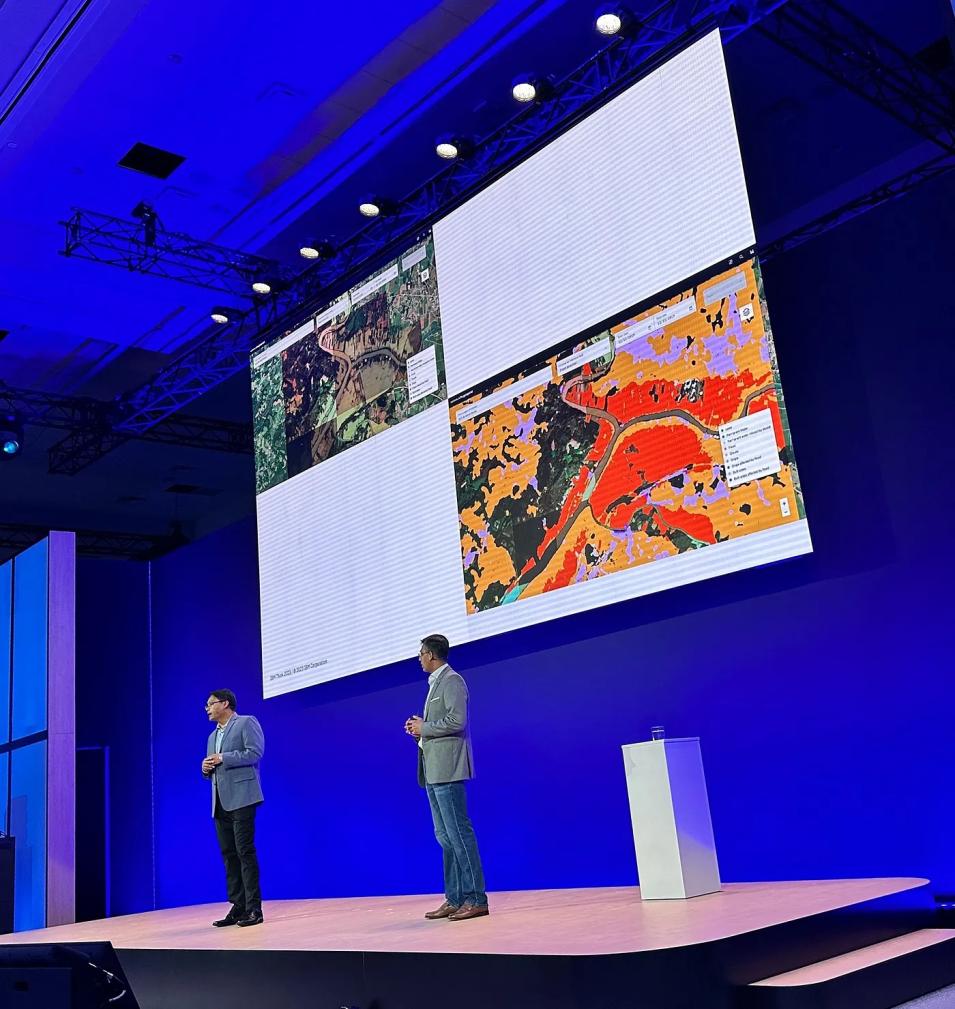A NASA/IBM partnership forged recently through a Space Act Agreement is already proving to be revolutionary for both Earth science research and artificial intelligence (AI) model development. At the 2023 IBM Think conference, IBM Research announced their success in constructing the first geospatial foundation model specifically trained with Earth observation satellite imagery. Foundation models are flexible AI models that are initially pretrained on comprehensive datasets of documents and articles, and their focus is then fine-tuned with more domain-specific content.
IBM Geospatial Foundation Model Trained with HLS Data
Foundation models are often trained on text-based documents, but IBM’s new geospatial foundation model was uniquely built using Earth surface reflectance data from NASA’s Harmonized Landsat Sentinel-2 (HLS) data products. HLS data is used routinely for environmental monitoring and data production is managed, in part, by the IMPACT HLS team. By priming the foundation model with labeled images of features like fire burn scars and flooding boundaries, the model is then poised to significantly accelerate geospatial analysis of future environmental events. Early testing has already indicated significant improvement (15%) in mapping floods and fire burn scars compared to deep learning models.
This achievement marks a considerable step forward in using foundation models to fuel more powerful and accurate remote sensing data analysis. You can read more on the IMB blog about how IBM Research designed and trained this new geospatial foundation model and how their work may have significant applications in business, agricultural, and disaster response efforts.
You can find more information about how IMPACT is advancing Earth science research on the project website.
